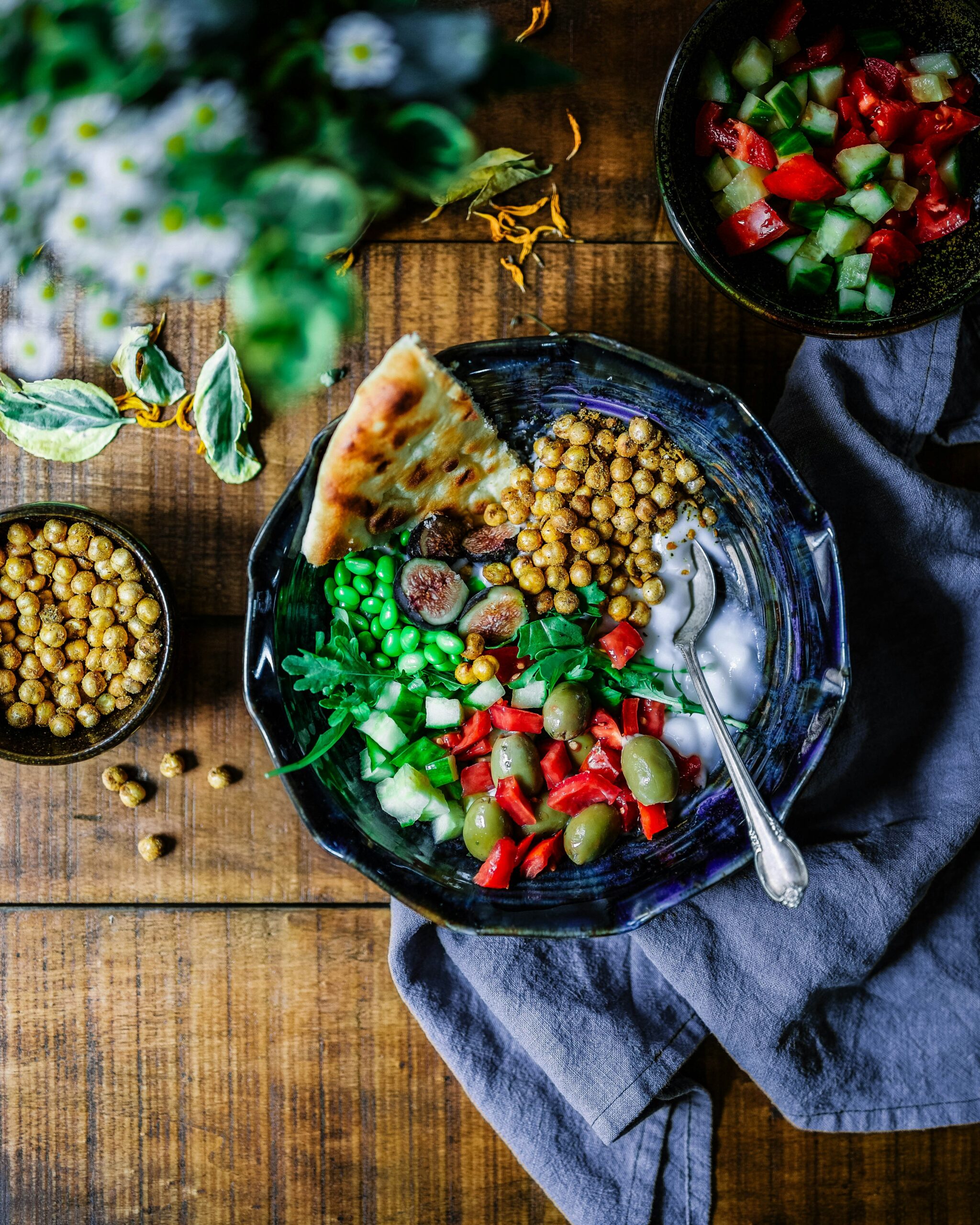Have you ever wondered about the origins of the delicious Southern food you love so much? Well, it turns out that Native American cuisine has played a significant role in shaping the flavors and techniques that are now synonymous with Southern cooking. From the Cherokee’s use of cornmeal to the Choctaw’s introduction of the three sisters crops, Native American tribes have left a lasting imprint on Southern cuisine, creating a rich and diverse culinary heritage that continues to thrive to this day. Get ready to explore the fascinating influence of Native American cuisine on Southern food and discover the mouthwatering dishes that have emerged from this cultural fusion.

Origins of Southern and Native American Foods
Comparison of historical context
The origins of Southern and Native American foods can be traced back to the rich and diverse history of the American South. Both cuisines have deep roots in the land and the people who inhabited it. Native American tribes, such as the Cherokee, Creek, and Choctaw, have a long history of cultivating and harvesting crops, and their culinary traditions have greatly influenced Southern cuisine.
The arrival of European settlers in the 16th and 17th centuries brought about a cultural exchange that would shape the future of Southern cooking. The settlers learned from the Native Americans how to cultivate and cook with native ingredients, and as the region’s population grew, their culinary practices evolved and incorporated elements from both Native American and European cuisines.
The evolution of Southern and Native American foods
Over time, Southern and Native American foods have evolved and merged to create a unique culinary tradition that is deeply rooted in the history and culture of the American South. Native American dishes have been adapted and integrated into Southern cuisine, and the influence of Native American agriculture, cooking techniques, spices, and herbs can be seen in many traditional Southern dishes.
Influence of Native American Agriculture on Southern Foods
Introduction to Native American agriculture
Native American agriculture played a vital role in shaping the food traditions of the American South. Native tribes developed sophisticated farming techniques that allowed them to cultivate a wide range of crops, including corn, beans, squash, and various root vegetables. These crops became staples in Native American diets and eventually found their way into Southern cuisine.
Key crops and their influence on Southern cuisine
Corn, also known as maize, was one of the most important crops cultivated by Native Americans. It became a staple ingredient in both Native American and Southern cooking, used in various forms such as cornmeal, grits, and hominy. Corn not only provided sustenance but also served as a versatile ingredient in dishes like cornbread, hush puppies, and corn pudding.
Beans and squash, often referred to as the “Three Sisters,” were also significant crops in Native American agriculture. These crops were often planted together, as they had complementary growing patterns. Beans provided nitrogen to the soil, while squash acted as ground cover, reducing weed growth and retaining soil moisture. The combination of beans, squash, and corn provided a complete source of nutrition and formed the basis of many Native American and Southern dishes.
Farming techniques and their influence
Native American farming techniques, such as the use of companion planting and the creation of irrigation systems, greatly influenced Southern agriculture. The concept of companion planting, where different crops are grown together for mutual benefit, was widely practiced by Native Americans. This technique not only maximized the use of available space but also improved soil fertility and reduced pests and diseases.
Irrigation systems, such as the digging of canals and the construction of earthen mounds, allowed Native American farmers to cultivate crops in areas with limited water supply. These techniques were later adopted by Southern farmers, enabling them to grow crops in the challenging Southern climate. The use of these farming techniques continues to be an integral part of Southern agriculture, ensuring the sustainability and productivity of the land.
Native American Food Staples and Their Southern Adaptations
Corn: the staple ingredient
Corn, as mentioned earlier, is a staple ingredient in both Native American and Southern cuisine. Cornmeal, made by grinding dried corn kernels, is a versatile ingredient used in various Southern dishes. It forms the base for cornbread, a beloved Southern classic that accompanies many meals. Cornmeal is also used to make grits, a popular breakfast dish in the South, and is a key ingredient in dishes like cornmeal-dusted catfish and cornbread stuffing.
Beans and squash: the ‘Three Sisters’
The combination of beans, squash, and corn, known as the “Three Sisters,” is a testament to the agricultural ingenuity of Native American tribes. This trio of crops provided a balanced and nutritious diet and has been adapted into numerous Southern dishes. Red beans and rice, a staple in Southern cuisine, is reminiscent of Native American bean-based dishes. Squash, such as summer squash and butternut squash, is commonly used in Southern cooking, whether in casseroles, soups, or side dishes.
Game and fish in Southern cuisine
Native Americans relied on hunting and fishing as an important source of food, and these practices became deeply ingrained in Southern food traditions. Indigenous game and fish, such as venison, wild turkey, catfish, and crawfish, continue to be celebrated ingredients in Southern cuisine. From fried catfish to smoked turkey, these flavorsome proteins have become an integral part of Southern cooking, resulting in a unique blend of Native American and Southern culinary traditions.
Role of Native American Cooking Techniques in Southern Cuisine
Cooking methods and Southern barbecue culture
Native Americans developed various cooking methods that are still prevalent in Southern barbecue culture today. The tradition of slow-cooking meat over an open flame can be traced back to Native American tribes, who used techniques such as pit cooking and smoking. Southern barbecue, with its emphasis on slow-cooked meats and flavorful sauces, owes much of its heritage to these Native American cooking techniques.
Use of pottery and other cooking utensils
Native Americans were skilled in crafting pottery vessels for cooking and storing food. The use of clay pots and ceramic containers allowed for more efficient cooking and preservation. In Southern cuisine, the influence of Native American pottery can be seen in dishes like Brunswick stew and gumbo, which are traditionally cooked in large pots over an open fire. The use of traditional cooking utensils, such as iron skillets and Dutch ovens, also reflects the influence of Native American cooking practices.
Preservation techniques and their influence
Native American tribes developed various preservation techniques to ensure the availability of food throughout the year. Methods such as drying, smoking, and fermenting were employed to preserve meats, fish, and vegetables. These techniques were later adopted by Southern cooks, who used smoking and curing methods to preserve meats like bacon and ham. The art of pickling, another preservation method, has also been embraced in Southern cuisine, with pickled vegetables often serving as a flavorful accompaniment to many dishes.

Impact of Native American Spices and Herbs in Southern Dishes
Native American spices in Southern dishes
Native Americans had an extensive knowledge of local herbs and spices, which they used to enhance the flavor of their dishes. Many of these spices, such as chili peppers, sassafras, and sumac, have found their way into Southern cooking. Chili peppers, in particular, are a prominent ingredient in Southern cuisine, adding a touch of heat to dishes like gumbo, jambalaya, and chili.
Herbs and medicinal plants in Southern cuisine
Native American tribes also used a variety of herbs and medicinal plants in their traditional cooking. Southern cooking continues to embrace the use of herbs like sage, thyme, and rosemary, which add depth and flavor to dishes. Additionally, the use of medicinal plants, such as mint and chamomile, in teas and beverages reflects the Native American influence on Southern cuisine.
Contribution to Southern flavor profiles
The use of Native American spices and herbs has contributed to the distinct flavor profiles of many Southern dishes. The combination of smoky flavors from Native American smoking techniques, the heat of chili peppers, and the aromatic herbs and spices results in a rich and complex culinary heritage. The influence of Native American flavors can be tasted in regional favorites such as Cajun and Creole dishes, which have become synonymous with Southern cuisine.
Fusion Dishes as a Result of Native American Influence
Popular Southern dishes with Native American roots
The fusion of Native American and Southern cuisines has given rise to numerous iconic dishes that have become hallmarks of Southern cooking. One such example is succotash, a classic Southern side dish made with lima beans, corn, and various spices. Fried green tomatoes, another Southern favorite, can be traced back to Native American cuisine, as both tomatoes and frying techniques were introduced by Native Americans.
Adaptations and culinary innovations
The blending of Native American and Southern culinary traditions has also led to culinary innovations and adaptations. Native American fry bread, for instance, has become a beloved Southern food, often served with various toppings or as a base for dishes like Indian tacos. The introduction of new ingredients and cooking techniques continues to inspire Southern cooks to create innovative dishes that honor both Native American and Southern heritages.

Cultural Exchange and Its Role in the Birth of Southern Cuisine
Trade & its influence on food culture
Trade played a significant role in the cultural exchange between Native American tribes and Southern settlers. The exchange of goods, ideas, and culinary practices fostered a deep appreciation and understanding of each other’s cultures. Native American tribes introduced Southern settlers to new ingredients, cooking techniques, and flavors, while the settlers introduced European ingredients and cooking methods. This cultural exchange laid the foundation for the birth of Southern cuisine.
Cultural interactions between Native American tribes and Southern settlers
The interaction between Native American tribes and Southern settlers was not solely limited to trade. It extended to shared celebrations, gatherings, and communal events, where people from different backgrounds came together to celebrate and enjoy food. These cultural interactions provided an opportunity for the exchange of culinary knowledge and traditions, resulting in the fusion of Native American and Southern food cultures.
Role of Festivals and Special Events in Shaping Southern Cuisine
Native American festivals & their food
Native American festivals and celebrations have played a significant role in shaping Southern cuisine. During these events, traditional Native American dishes are prepared and shared, providing an opportunity for people to connect with their cultural heritage. Traditional foods, such as fry bread, buffalo stew, and corn soup, are commonly served at these festivals, giving attendees a taste of the rich culinary traditions of Native American tribes.
Influence of community events on Southern food traditions
Community events, such as church dinners, fairs, and festivals, have also influenced Southern food traditions. These gatherings bring people together, allowing them to share and showcase their culinary skills and traditions. From chili cook-offs to barbecue competitions, these events have become platforms for celebrating and preserving the diverse food culture of the American South.
Differing Regional Influences on Southern Food
Native American tribal differences & their effects on regional Southern food
The Native American tribes of the American South were diverse, each with their distinct culinary practices and traditions. This diversity has had a profound effect on regional variations in Southern food. For example, the influence of Native American tribes like the Choctaw and Creek can be seen in the cuisine of the Mississippi and Alabama regions, while dishes from the Cherokee and Seminole tribes have left a mark on the cooking of the Appalachian Mountains and Florida, respectively.
Geographic considerations & their effect on available ingredients and dishes
The geographic diversity of the American South has also shaped its regional cuisine. The availability of certain ingredients and proximity to different ecosystems have influenced the dishes and flavors of each region. Native American tribes adapted their diets to the local flora and fauna, using ingredients that were abundant in their respective regions. Similarly, Southern settlers embraced these ingredients, incorporating them into their own culinary traditions and giving rise to the distinct flavors and dishes of each Southern region.
Concluding Thoughts: The Enduring Influence of Native America on Southern Food
The enduring influence of Native American cuisine on Southern food is undeniable. From the crops cultivated by Native American tribes to the cooking techniques, spices, and herbs they introduced, Native American heritage is deeply woven into the fabric of Southern cuisine. The fusion of Native American and Southern culinary traditions has given rise to a diverse and vibrant food culture that continues to evolve and adapt to changing times.
In modern Southern food, the influence of Native American cuisine can be seen in dishes ranging from gumbo and chili to cornbread and barbecue. The use of native ingredients, the preservation techniques handed down through generations, and the unique flavor profiles created by Native American spices and herbs have become integral components of Southern cooking.
As Southern cuisine continues to evolve, the ongoing influences of Native American cuisine will undoubtedly shape its future. The preservation and celebration of Native American foodways, through festivals, community events, and the passing down of culinary traditions, will ensure that the legacy of Native American cuisine lives on in the heart and soul of Southern food.

